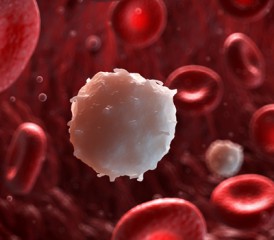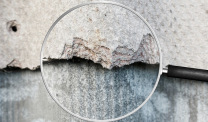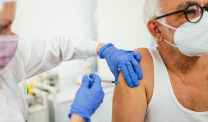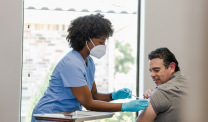Simple Blood Test Using UV Light Could Detect Cancer
Research & Clinical TrialsWritten by Tim Povtak • Edited By Walter Pacheco
Asbestos.com is the nation’s most trusted mesothelioma resource
The Mesothelioma Center at Asbestos.com has provided patients and their loved ones the most updated and reliable information on mesothelioma and asbestos exposure since 2006.
Our team of Patient Advocates includes a medical doctor, a registered nurse, health services administrators, veterans, VA-accredited Claims Agents, an oncology patient navigator and hospice care expert. Their combined expertise means we help any mesothelioma patient or loved one through every step of their cancer journey.
More than 30 contributors, including mesothelioma doctors, survivors, health care professionals and other experts, have peer-reviewed our website and written unique research-driven articles to ensure you get the highest-quality medical and health information.
About The Mesothelioma Center at Asbestos.com
- Assisting mesothelioma patients and their loved ones since 2006.
- Helps more than 50% of mesothelioma patients diagnosed annually in the U.S.
- A+ rating from the Better Business Bureau.
- 5-star reviewed mesothelioma and support organization.
Testimonials
My family has only the highest compliment for the assistance and support that we received from The Mesothelioma Center. This is a staff of compassionate and knowledgeable individuals who respect what your family is experiencing and who go the extra mile to make an unfortunate diagnosis less stressful. Information and assistance were provided by The Mesothelioma Center at no cost to our family.LashawnMesothelioma patient’s daughter
How to Cite Asbestos.com’s Article
APA
Povtak, T. (2023, December 20). Simple Blood Test Using UV Light Could Detect Cancer. Asbestos.com. Retrieved April 27, 2024, from https://www.asbestos.com/news/2014/08/06/new-blood-test-detects-cancer/
MLA
Povtak, Tim. "Simple Blood Test Using UV Light Could Detect Cancer." Asbestos.com, 20 Dec 2023, https://www.asbestos.com/news/2014/08/06/new-blood-test-detects-cancer/.
Chicago
Povtak, Tim. "Simple Blood Test Using UV Light Could Detect Cancer." Asbestos.com. Last modified December 20, 2023. https://www.asbestos.com/news/2014/08/06/new-blood-test-detects-cancer/.

A new blood test that exposes a person’s blood to ultraviolet light could help doctors in the early detection of cancer.
Varying intensities of UV light cause different amounts of damage to the DNA of white blood cells. British researchers say their Lymphocyte Genome Sensitivity (LGS) blood test measures that degree of damage to distinguish between healthy, precancerous and cancerous cells.
The blood test could be helpful in the early discovery of cancers difficult to detect like pleural mesothelioma. It also could help patients access treatments earlier, and save money on costly invasive testing procedures like biopsies and colonoscopies.
“This is enormous,” University of Bradford School of Life Sciences professor Diana Anderson, Ph.D., told Asbestos.com. She led the team of U.K. researchers developing the LGS blood test. “This is what we’ve been looking for. It could change a lot of things. The results of this study are remarkable.”
The test does not differentiate between specific cancer types. It only detects if cancer is present.
Details of the study were published in July on the university’s Website and the Journal of Federation of American Societies for Experimental Biology.
Preliminary results show the LGS test accurately identified cancer and precancerous conditions in blood samples from people with melanoma, colon cancer and lung cancer, the only three cancers tested. Anderson believes it will work equally well with other cancers, too.
The U.K. discovery is the second development of a blood test in recent months for the detection of cancer. Researchers in Japan published a study in June showing a blood test that is raising hopes it can more accurately diagnose mesothelioma, possibly leading to earlier cancer treatment and improved chances of survival.
Measuring Damage to DNA
The premise is that white blood cells are part of the body’s natural healing process, and they are under stress when fighting diseases like cancer.
“We found that people with cancer have DNA which is more easily damaged by ultraviolet light than other people, so the test shows the sensitivity to damage of all DNA in a cell,” Anderson said. “It sounds too simple to work, but it does.”
The study included blood samples from 208 individuals. There were 94 healthy people recruited from the staff and student body at the University of Bradford. There were 114 patients referred by specialist clinics within the Bradford Royal Infirmary. All samples, prior to any diagnosis and treatment, were exposed to five different levels of ultraviolet light.
The measurements accurately correlated to the 58 patients who later were diagnosed with cancer, 56 with precancerous conditions and 94 without signs of cancer.
“The results are powerful,” Anderson said in a Bradford University press release detailing the work. “We’ve identified significant differences between the healthy volunteers, the suspected cancer patients and the confirmed cancer patients, of mixed ages at a statistically significant level.”
Results Garner Skepticism and Encouragement
Anderson said the results were met with mixed emotions from other researchers in related fields.
“I’ve had other scientists tell me that pharmaceutical companies will be threatened by this, and I’m sure others will try and find holes in our research because it sounds so simple,” she said. “But I’m convinced it will work.”
The University of Bradford already filed patents for the technology, establishing a spinoff company, Oncascan, to help its development as a commercial enterprise. Anderson knows the concept will need more testing in clinical trials, along with detecting other types of cancers, before it will come to market.
“From a scientific standpoint, my question would be what type of cancer does a patient have if this UV light detection actually works?” a U.S. cancer research specialist asked Asbestos.com. “My instinct is that this test will have a lot of ‘background noise,’ with many false positives and false negatives. Can the test be optimized to identify precancerous conditions in asbestos-exposed individuals?”
Anderson believes the test can become a cost-effective way to screen large groups of high-risk patients, like those who work with cancer-causing agents like asbestos, or those whose genetics make them more susceptible to cancer.
“I think this will become a cancer detection test that can stand on its own,” she said.







